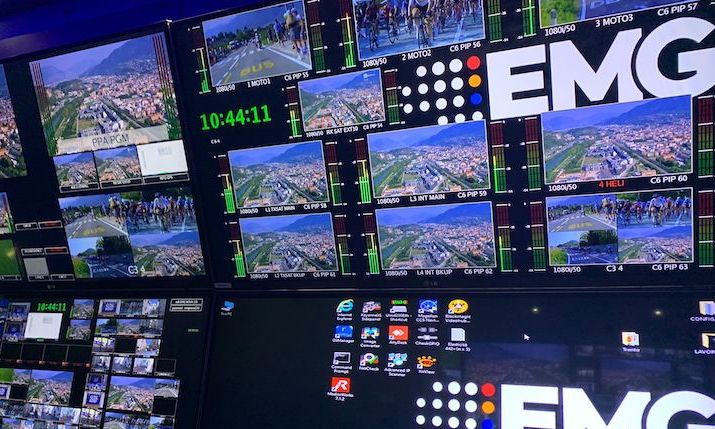Remote production acceleration: EMG explores phase two in the evolution of decentralised production
 By Eamonn Curtin, chief commercial officer, EMG UK
By Eamonn Curtin, chief commercial officer, EMG UK
The industry has come a long way in the last two years. Processes and procedures that we would not have thought acceptable prior to March 2020 are now commonplace, even for the highest tier sports events. Depending on who you talk to, the deployment of remote production has been accelerated by anything from two to five years.
It was always coming, but the necessities of continuing production during the pandemic have steamrollered any objections all the way from the OB truck to the boardroom.
Established way of working
Remote production is now firmly here to stay; the economics work, the environmental aspects work, and the people aspect works. It would be unwise to go back to the days of moving large trucks full of people and gear around the country, with all the attendant cost, time, and pollution that goes with it.
Moreover, there is no need either. The investment that companies such as us have made in establishing reliable, robust remote workflows has been considerable. We have built production hubs, we have invested in connectivity, we have galleries that are, for all intents and purposes, the same as the ones that would have been parked in the bowels of stadia across Europe only a few years ago.
The way they will evolve will be fascinating to track, but one thing is certain; we will all want to see more utilisation of equipment. This is a key part of phase two of remote production. Moving trucks and people around the country is a very inefficient way of deploying resources. An average OB truck spends around two thirds of its days travelling to and from a venue, setting up and derigging, and only one day actually working.
With centralised production we could utilise the equipment much more efficiently. To cover two football matches on the same day in the old production model we would need two trucks with two identical loads of equipment. While we still have to send cameras and rig a venue under remote production, suddenly a centralised production gallery can use one bank of EVS machines, for instance, on both games if the starts are staggered.
More than that, the same gallery crews can work on two or even three consecutive matches in a shift, getting the maximum value out of a company’s most valuable assets; the skilled employees that actually work the gear.
It is going to require quite a change of mindset and a degree of coordination with clients, but it is a developing trend that we expect to see accelerate throughout 2022. Take it a step further and companies with production hubs can realistically start competing for jobs on the global stage if the connectivity is there to connect the venue with the hub at low enough latency. Full two or three shift 24/7 operation might be a while away yet, but it is technically feasible.
There is even a phase three that theoretically lies beyond that of wholly decentralised production, where much of the equipment in the hub effectively becomes virtualised and operates via multi-access edge computing (MEC) in the cloud, freeing the production of any specific locational requirements at all.
Managing the transition
For the immediate future though, OB companies have to navigate a path where remote is all-pervasive, but their current fleet is still depreciating and needs to be utilised. Waiting until the current investment cycle is complete is not an option in the markets which have moved forward into remote, so in 2022 we will see companies start to move their assets (ie, OB trucks) around to different countries if they can, even look to strip them out and/or dispose of them if they cannot. It is a mark of how the business has changed; some of the highest tech – the most advanced mobile production suites ever built – are now sitting permanently back at base doubling as remote production hubs.
We can see how limited they are as a result. Many of the initial new-build production hubs that were established in the past two years were developed in a fair degree of haste and often have simply reflected the established status quo too. Now that there is time to breath a bit more, as an industry we can look at their design and work out how we want them to operate. We need manufacturers on board with this too, to recognise that the industry has changed permanently and to catch up with the real world demands on their kit.
When you are free from the constraints of designing everything to fit in an OB truck, even a top of the range triple-expanding leviathan, then you have a gallery that can reflect the way you want to work rather than the way you have to. The result will be more efficiencies, less costs and emissions, and an even better onscreen experience for the viewers. The industry has come a long way in the past two years, but it still has further to go.
